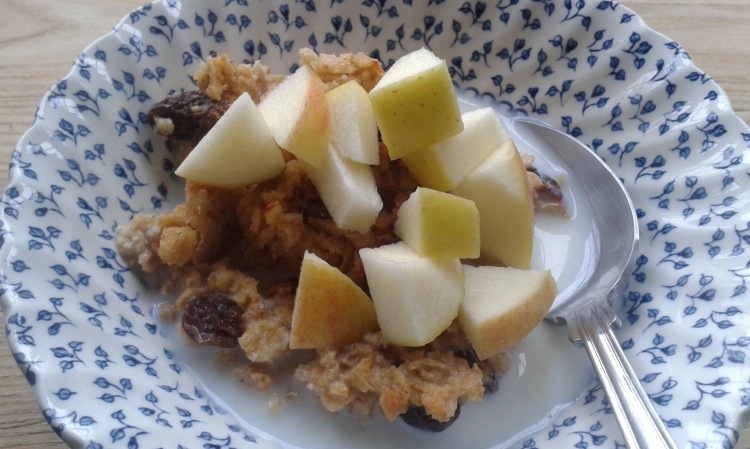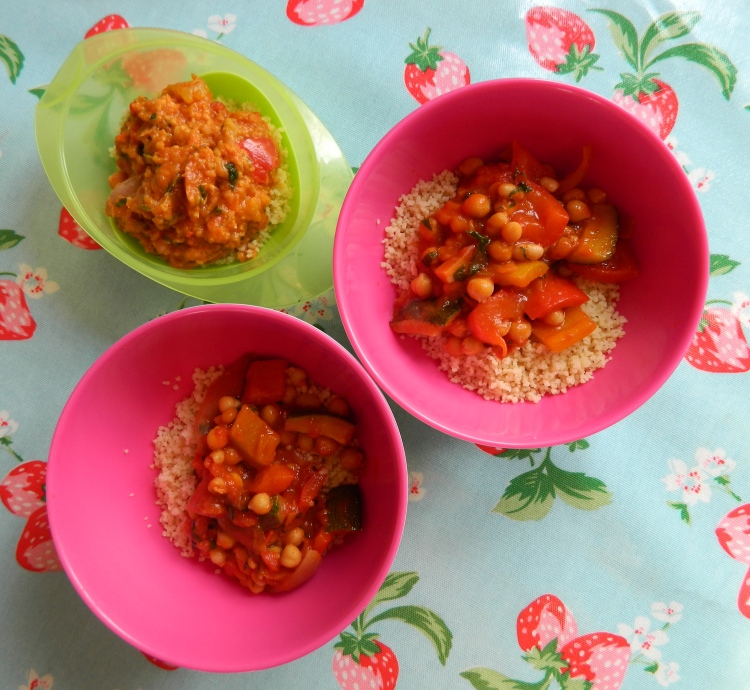Oaty apple breakfast bake with #noaddedsugar
This breakfast dish is very popular in my house. I have to admit that eldest daughter loves it and the youngest will eat it but its not her favourite. But I think a lot of families have that going on.
You make the apple sauce in batches and freeze that makes it easier. We have lots of windfalls at the moment so am doing this when I can, in between everything else.
You make this dish the night before, we make it weekdays and weekends. All you do is turn the oven on when you get up and bake it for 30 minutes. It’s mainly measuring and mixing, so it was easy for my 2 year old to help make it last night.
Have been using windfalls for my apple sauce, I am beginning to run out of freezer space. Maybe time for another freezer.
I’ve made this dish with no added sugar, only the sugars found naturally in fruit.
Because it has no added sugar it’s suitable for weaning. Just take out the raisins as they’re high in sugar, it’s best to wait until your little one is 1 before introducing them.
You’ll need an oven-proof dish – mine is about 25 cm x 17 cm.
Gluten free and dairy free
You can make it gluten free by using gluten free oats.
Milk can be swapped for non-dairy milk like coconut drinking milk or almond milk, and the butter for non-dairy unhydrogenated spread or coconut oil.
You will need…
100g raisins
180g apple sauce (stewed apples blended without sugar)
300ml milk
350g whole oats
1 teaspoon baking powder
1 teaspoon vanilla extract
1 teaspoon cinnamon
1 apple cored but unpeeled grated
3 medium eggs, beaten
50g melted unsalted butter
How to…
Grease a shallow dish.
Put all the ingredients in a bowl and mix well.
Put in the dish, cover and leave overnight in the fridge.
In the morning heat the oven to 160º c fan oven / 180º c / gas mark 5 for 30 minutes.
Serve with a little milk poured over and chopped fruit.
Portions and nutrition
This recipe makes enough for 1½-2 rounds of breakfast for a family of 4-5. Based on a 5 year old having a 100g portion this breakfast it contains good amounts of protein, fibre, potassium, calcium, magnesium. It makes a good contribution to iron and zinc intakes too along with key B vitamins such as B6, B12 and more. So it makes for a really healthy start to the day.
The sugar content per 100g is 9.5g (just under 2 teaspoons) but it’s all from fruit so doesn’t count towards the maximum recommended intake for this age of ‘free sugars’* of 4 teaspoons a day.
*’free sugars’ is a definition by World Health Organisation which has been adopted by the UK Governments Scientific Advisory Committee in their recent report on Carbohydrates and health. Free sugars are any processed sugar added to foods by a manufacturer, cook or consumer, plus sugars naturally present in honey, syrups and unsweetened fruit juice.














